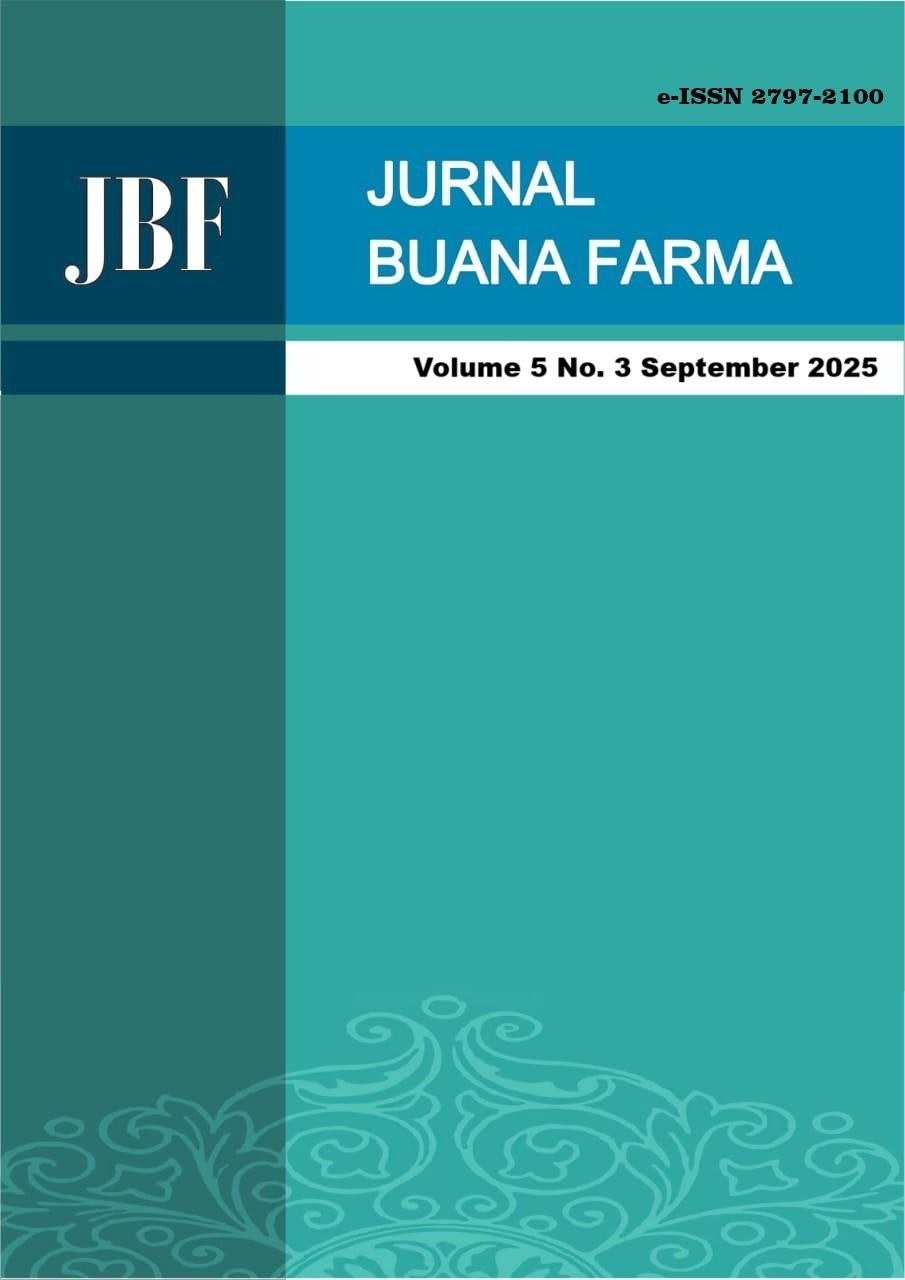ANALISIS EFEKTIVITAS BIAYA PENGOBATAN ASPILET DAN CLOPIDOGREL PADA PASIEN KELAINAN JANTUNG ISKEMIK
Abstract
Ischemic Heart Disease (IHD) is a leading cause of mortality in Indonesia and imposes a considerable financial burden on the national health insurance system (BPJS). Antiplatelet agents such as Aspilet and Clopidogrel are widely prescribed, yet their comparative effectiveness and cost-efficiency remain essential to evaluate. This study employed a Cost-Effectiveness Analysis (CEA) with a retrospective design using inpatient medical records at RSUD Pemangkat. A total of 66 patients were selected by purposive sampling. Clinical outcomes included reductions in blood pressure, heart rate, and total treatment costs. Cost analysis applied the formulas for ACER (Average Cost-Effectiveness Ratio) and ICER (Incremental Cost-Effectiveness Ratio). Results showed that Aspilet achieved greater reductions in systolic (25.24 mmHg) and diastolic blood pressure (24.28 mmHg) compared to Clopidogrel (25.24 mmHg; 13.17 mmHg). Conversely, Clopidogrel provided superior heart rate reduction (12.04 bpm) compared to Aspilet (10.52 bpm). Treatment costs were lower for Aspilet (Rp 64,045) than Clopidogrel (Rp 68,580). ACER indicated Aspilet was more cost-effective for blood pressure outcomes (Rp 2,021/mmHg vs Rp 5,207/mmHg), whereas Clopidogrel was more efficient for heart rate (ICER Rp 432.49). In conclusion, therapy selection may be tailored to the patient’s dominant clinical parameter: Aspilet is more cost-effective for blood pressure control, while Clopidogrel is preferable for heart rate management. Clinically, CEA findings can guide hospital decision-makers and BPJS in optimizing antiplatelet therapy choices.References
Hasanah, N., Putajaya, F., Kania, L., Ismaya, N. W. A., & Aini, N. N. (2021). Faktor-Faktor Yang Berhubungan Dengan Kepatuhan Pasien Penyakit Jantung Iskemik Terhadap Terapi Antiplatelet. Jurnal Farmasi Klinik Indonesia. 10(2):120–128. https://doi.org/10.7454/jfki.v10i2.567
Nurkhalica, R., Sari, D., & Mulyani, T. (2025). Analisis Cost-Effectiveness Clopidogrel Vs Aspirin Pada Pasien Kardiovaskular. Jurnal Ilmiah Global Farmasi. 3(1):15–22. https://doi.org/10.1234/jigf.v3i1.234
Rizky, A., Nugroho, H., & Furqon, M. (2022). Perbandingan Efektivitas Antiplatelet Pada Pasien Penyakit Jantung Iskemik. Jurnal Kedokteran Brawijaya. 34(2):105–112. https://doi.org/10.21776/ub.jkb.2022.034.02.5.
Direktorat P2PTM. (2019). Pedoman Pencegahan Dan Pengendalian Penyakit Jantung Dan Pembuluh Darah. Kementerian Kesehatan RI.
Verma, A., & Gupta, R. (2022). Cost-effectiveness Of Antiplatelet Therapy In Cardiovascular Diseases: A Systematic Review. Pharmacoeconomics. 40(8):745–759. https://doi.org/10.1007/s40273-022-01145-7.
Li, J., & Chen, X. (2023). Economic Evaluation Of Aspirin And Clopidogrel In Ischemic Heart Disease: A Global Perspective. Journal of Cardiovascular Pharmacology. 82(5):467–478. https://doi.org/10.1097/FJC.0000000000001352













